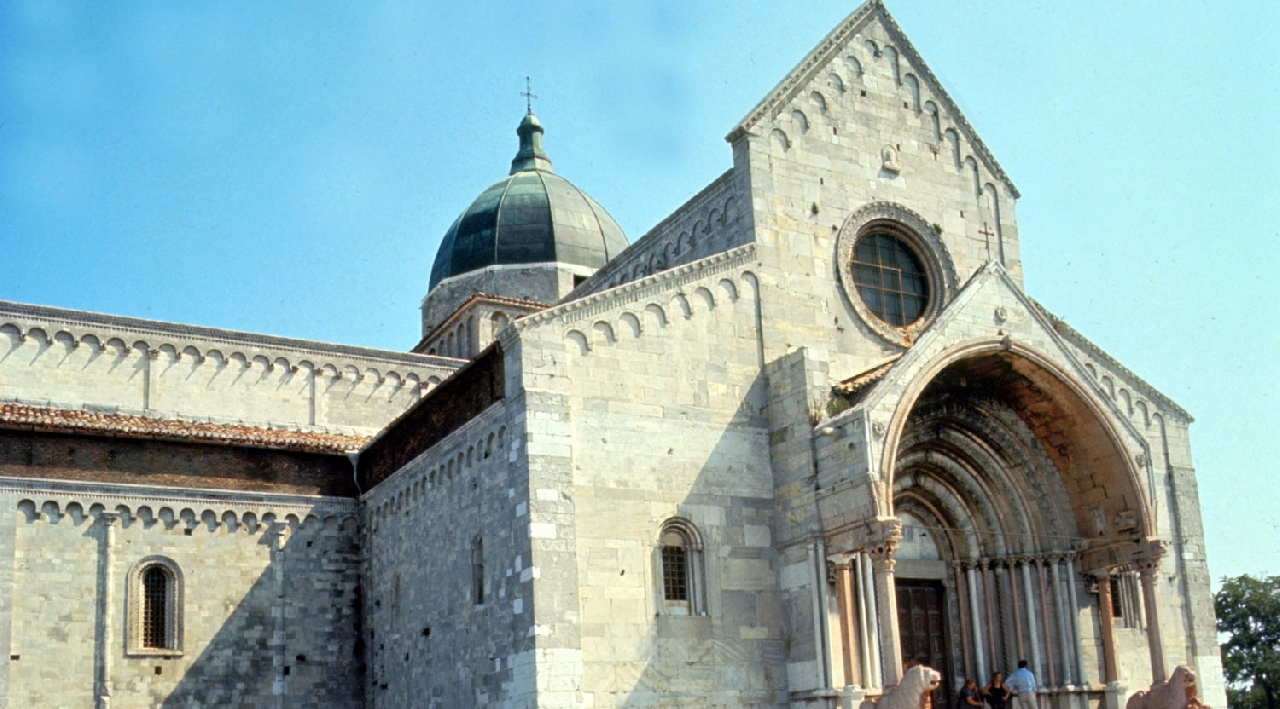Marche Art and culture
Blog Discovering the region Marche
A Visit to the Cathedral of San Ciriaco: Ancona Cathedral
Ancona 0000-00-00
Ancona Duomo is nothing other than the Cathedral of San Ciriaco: it is the cathedral of the archdiocese of Ancona – Osimo, and as such has a triple importance on a religious, artistic and historical point of view.
The cathedral is, in fact, considered by experts as one of the most interesting buildings of religious architecture in the whole country. Amongst its peculiarities there is undoubtedly the fusion between the byzantine plan, the Romanesque style and again byzantine decoration. Even its geographical location is, in its own way unique and scenographic, considering that the Cathedral stands on the top of the Guasco hill, where the acropolis was once located.
Art and culture in the Marche: the history of the Ancona Cathedral
Travelling back in time, reconstructing the history of Ancona Duomo, we discover that in the area, already in 3rd century BC, stood an Italic temple: more than two thousand years ago, therefore, locals would gather on the area, most probably to honour the goddess Aphrodite. What we know today of such a distant epoch comes from the ruins found during the excavations carried out on the site in the second half of the 1940s. In the 6th century AD, on the temple of Aphrodite was built a Paleochristian basilica, dedicated to St. Lawrence: some of its remains in the modern cathedral are shown in the perimeter walls and on the mosaic floor. This basilica was made of three naves; its entrance where the Chapel of the Crucifix is currently located. Later on, between 996 and 1015, the new church was built, following an enlargement of the building, which still kept its three naves.
The history of the last thousand years of the cathedral of the Marche’s capital city is rich in meaningful events, for those who believe and for those who do not: in 1017, for example, the basilica welcomed the relics of St. Cyriacus and of St. Marcellinus of Ancona. Between the end of 1100 and early 1200, there were then carried out important extension works which led to the addition of a transept; this then created a cross once it was united with the original basilica plan. The floor plan was then altered and turned into a Greek cross, with transepts ending in elevated apses.
Foe those interested in the art culture of the Marche it is important to be aware that during the last two centuries, Ancona Cathedral underwent a series of restorations: a very important one took place in 1883 and a second one in 1920, in order to repair the serious damages caused on the 24th of May by the Austro-Hungarian fleet at the beginning of World War I. After World War II, the situation improved; yet, the 1972 earthquake left some unpleasant memories, now however the cathedral is open to all visitors.

TOURIST ITINERARIES
The region of the Marche offers a wide range of landscapes and itineraries to discover.

EVENTS IN THE MARCHE
The Marche is a region to be enjoyed: traditional festivals and great events.

ART AND CULTURE
An open air museum of history and important works of art.

NATURE AND PARKS
A region with a long life expectancy, where you can live well, immersed in nature.





